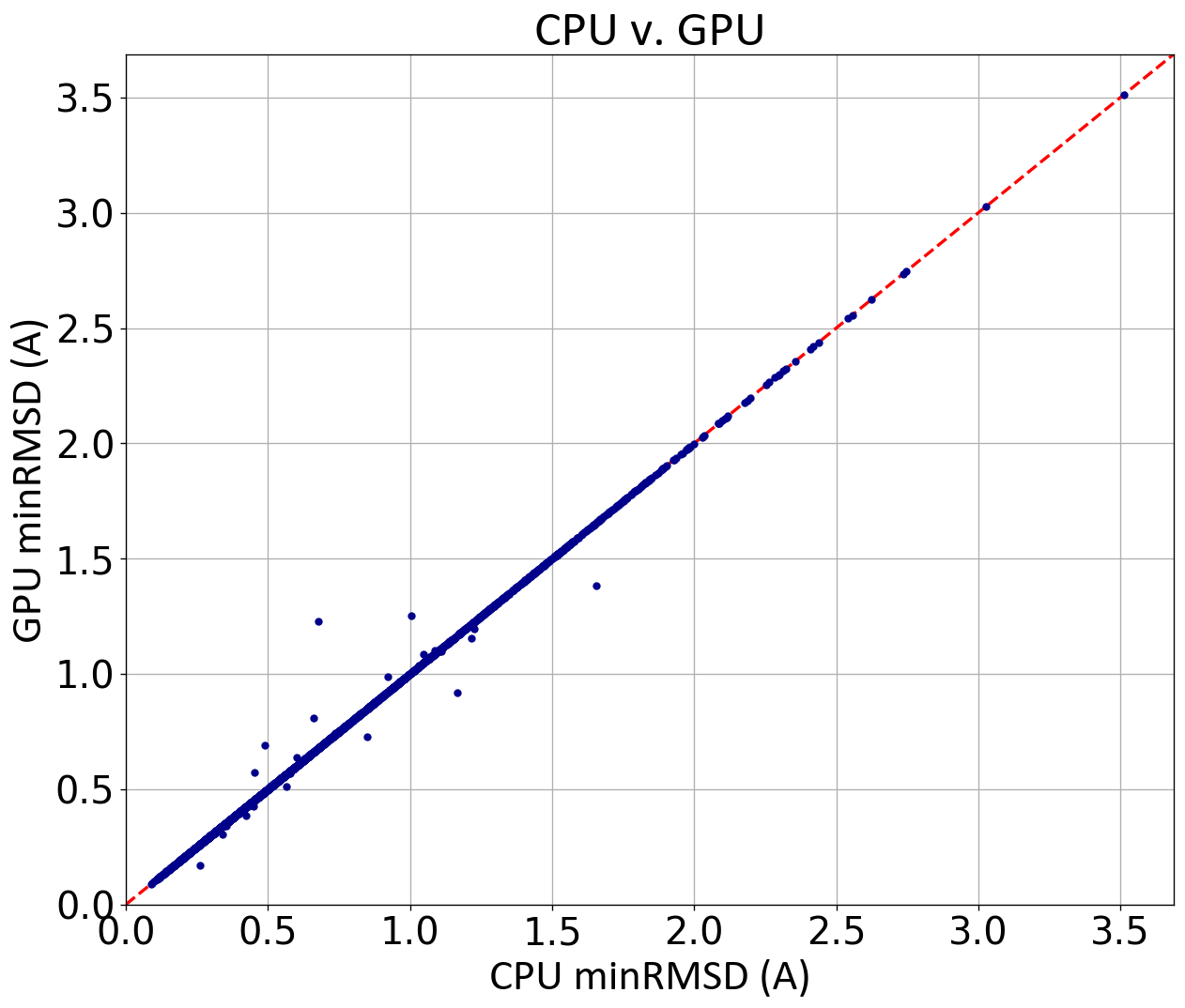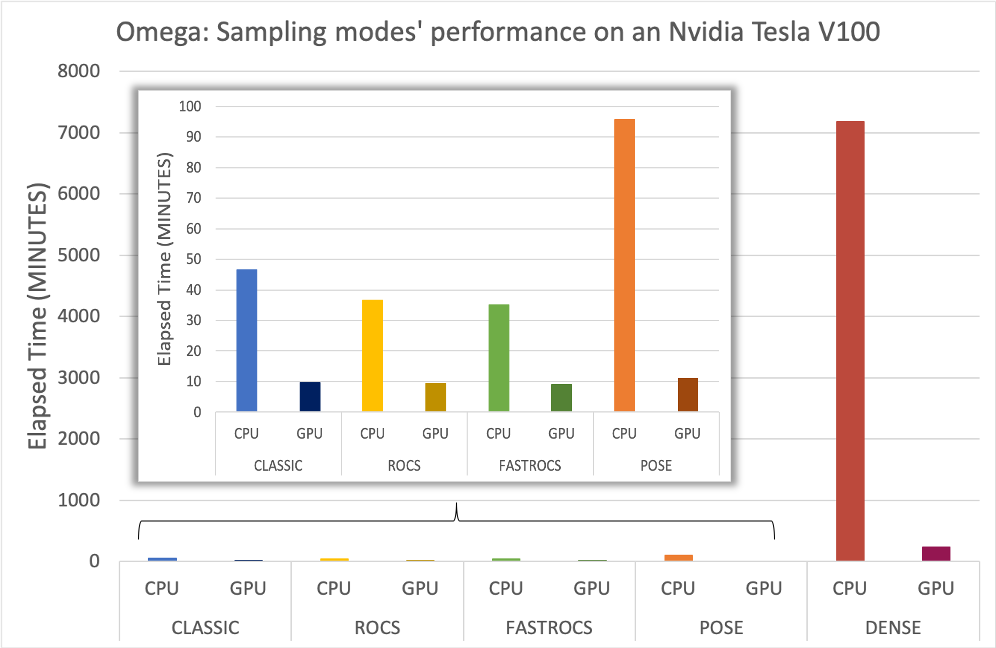Release Highlights 2020.1.1
The OEApplications 2020.1.1 is a bug-fix of the OEApplications 2020.1 release, and depends on OEToolkits 2020.1.1.
Release Highlights 2020.1
The OEApplications 2020.1 is a bug-fix of the OEApplications 2020.0 release, and depends on OEToolkits 2020.1.
Release Highlights 2020.0
OpenEye Toolkits and Applications have been integrated into a single release cycle. This will provide more consistency among our products and enable a more robust and efficient development cycle. This integration reduces release process management overehead, freeing developer time for new features and bug-fix releases for critical issues.
OMEGA: GPU-OMEGA - GPU-accelerated torsion driving
The 2020.0 release introduces GPU-OMEGA to the OMEGA application suite to
provide accelerated torsion driving. It is
integrated into the existing OMEGA application; no additional
user actions are required to make use of this new feature. GPU-OMEGA detects any
supported Nvidia GPU on Linux platforms and accelerates performance
unless explicitly suppressed by using the option -useGPU false. GPU-OMEGA is available with
all sampling modes except macrocycle, which does not use the torsion driving
method for conformer generation. For more details on GPU-OMEGA, including prerequisites
and additional requirements for using dense mode, please see
GPU-OMEGA.
GPU-OMEGA performs at the same high level of accuracy as Omega TK, as shown below using a filtered subset of the Platinum dataset [Friedrich-2017] [Hawkins-2020]:

Comparison of the minimum RMSDs of CPU- and GPU-generated conformers against the experimental coordinates of a filtered subset of the Platinum dataset
GPU-OMEGA was benchmarked against the CPU on AWS to demonstrate the achievable
performance on a P3 instance,
which houses a single Nvidia Tesla V100
GPU. GPU-OMEGA was benchmarked with all supported sampling modes (classic, dense,
pose, rocs, and fastrocs) using a subset of ~6000 molecules from the GSK TCAMs dataset
[Gamo-2010]. The most impressive speed-up is seen with the dense sampling mode, with
a reduction in time from 120 hours to less than 4 hours.

Elapsed time comparison between Omega and GPU-OMEGA on an AWS P3 instance when sampling a subset of the GSK-TCAMS dataset with classic, rocs, fastrocs, pose, and dense modes
SPRUCE: Protein Loop Modeling
The 2020.0 release adds protein loop modeling to the SPRUCE application. This approach relies on a template database derived from structures in the public RCSB Protein Data Bank. The database, which has been built for modeling loops that are 4-20 residues long by default, is available for download in a platform-independent format. A separate application, LoopDB_Builder, allows appending additional structures to the existing database. For example, proprietary in-house structures can be added, or the database can be completely rebuilt with different options.
This approach has been validated on a public dataset from Rossi et al. [Rossi-2007]. The results shown below were generated by building the excised loops back into the dataset, where the specific structures themselves were not part of the template database, and used the same success criterion as in the paper (<2.5A backbone RMSD). The results are generally good and the median RMSD is 0.6-0.7A (blue dots), irrespective of the length of the modeled loop. The mean RMSD (green dots) may be higher as unsuccessful cases (gray bar) can deviate significantly from the expected result. Only in a one case (out of ~200 loops), was a result not produced (red bar), i.e. did not survive the search and filtering steps.

Performance assessment building loops ranging from 4-12 residues in length
SZYBKI: Custom SMIRNOFF
The abilities of SZYBKI and FreeForm to use force fields based on SMIRNOFF
(SMIRks Native Open Force Field) specifications has been extended to use custom
versions of such force fields. The -ff parameter in both SZYBKI and FreeForm
now accepts XML files with SMIRNOFF specifications in addition to the predefined names
for built-in force fields.
The coverage of built-in force fields has also been extended by incorporating
Parsley_OpenFF1.1.1 from the
Open Force Field Initiative.
General Notices
All applications, including GUI applications, are now available in the RHEL8 application bundle except for GPU-OMEGA, the CUDA-enabled feature of OMEGA. GPU-OMEGA will be supported in the next release when the toolkits have been upgraded to support CUDA 10.
The application bundle for macOS is now notarized and can be run on macOS Catalina 10.15. Apple notarization gives users of our software more confidence that the Developer ID-signed software has been checked by Apple for malicious components.
This is the last release to support Ubuntu16.04. Support for Ubuntu20.04 will be added in the next release.
MacOS 10.12 is no longer supported.